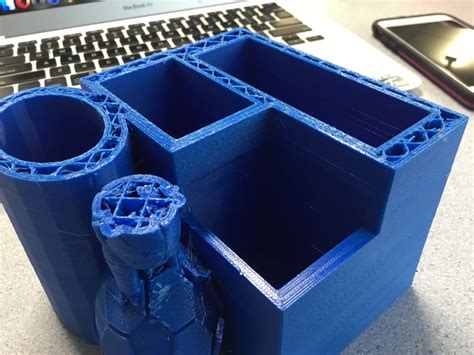1. Custom Phone Cases
Protect your smartphone in style with a custom-designed 3D-printed phone case. You can create a case that perfectly fits your phone model and features your favorite designs, patterns, or even your name or initials.
| Phone Model | Case Dimensions (mm) | Filament Type |
|---|---|---|
| iPhone 12 | 146 x 71 x 10 | PLA, ABS |
| Samsung S21 | 152 x 71 x 9 | PLA, PETG |
| Google Pixel 5 | 145 x 70 x 10 | PLA, TPU |
2. Personalized Keychains
Never lose your keys again with a unique 3D-printed keychain. Design a keychain that reflects your personality, features your name, or showcases your favorite hobby or interest.
3. Miniature Figurines
Bring your favorite characters from movies, TV shows, or video games to life with 3D-printed miniature figurines. You can find a wide range of 3D models online or create your own custom designs.

4. Functional Tools
3D printing isn’t just for decorative items – you can also create functional tools for everyday use. From wrenches and pliers to screwdrivers and hammers, 3D printing allows you to create tools tailored to your specific needs.
| Tool | Filament Type | Infill (%) |
|---|---|---|
| Wrench | ABS, PETG | 50-100 |
| Pliers | ABS, PETG | 50-100 |
| Screwdriver | PLA, ABS | 30-50 |
5. Jewelry and Accessories
Create unique and stylish jewelry and accessories with 3D printing. From earrings and necklaces to bracelets and rings, the possibilities are endless. Experiment with different materials, colors, and designs to create one-of-a-kind pieces.
6. Cosplay Props and Costumes
Elevate your cosplay game with 3D-printed props and costume elements. Whether you need a specific weapon, armor piece, or accessory, 3D printing allows you to create accurate and detailed replicas of your favorite characters’ gear.
7. Home Decor Items
Add a personal touch to your home decor with 3D-printed items. Create custom vases, picture frames, candle holders, or even furniture pieces that match your style and preferences.
8. Educational Models
3D printing is a valuable tool for education, allowing students to create physical models of complex concepts. From anatomical models and molecular structures to architectural designs and engineering prototypes, 3D printing brings abstract ideas to life.
| Educational Model | Filament Type | Layer Height (mm) |
|---|---|---|
| Anatomical Heart | PLA | 0.1 – 0.2 |
| DNA Double Helix | PLA, ABS | 0.1 – 0.15 |
| Bridge Design | PLA, PETG | 0.2 – 0.3 |
9. Puzzle Toys
Challenge your mind and entertain yourself with 3D-printed puzzle toys. From interlocking pieces and brain teasers to Rubik’s cubes and maze balls, 3D printing offers endless possibilities for creating engaging and mentally stimulating toys.
10. Musical Instruments
Create your own custom musical instruments with 3D printing. Design and print ukuleles, flutes, whistles, or even percussion instruments, tailored to your preferences and playing style.
11. Prosthetics and Assistive Devices
3D printing technology has the potential to improve lives by creating affordable and customizable prosthetics and assistive devices. From prosthetic hands and arms to braille embossers and wheelchair ramps, 3D printing makes these life-changing devices more accessible to those in need.
Frequently Asked Questions (FAQ)
1. What materials can I use for 3D printing?
There are various materials available for 3D printing, including:
– PLA (Polylactic Acid): Biodegradable, easy to print, and suitable for beginners.
– ABS (Acrylonitrile Butadiene Styrene): Strong, durable, and heat-resistant, but requires a heated bed and enclosed printing environment.
– PETG (Polyethylene Terephthalate Glycol): Combines the ease of use of PLA with the strength and durability of ABS.
– TPU (Thermoplastic Polyurethane): Flexible and elastic, ideal for creating items that require bendability or impact resistance.
2. How long does it take to 3D print an object?
The printing time depends on various factors, such as the size and complexity of the object, the layer height, and the printing speed. A small, simple object can take a few minutes to print, while a large, intricate item can take several hours or even days.
3. Can I sell my 3D-printed items?
Yes, you can sell your 3D-printed items, but it’s essential to ensure that you have the rights to the designs you use. If you create your own designs, you can sell the printed objects without any issues. However, if you use designs created by others, make sure you have permission or that the designs are licensed for commercial use.
4. How much does a 3D printer cost?
The cost of a 3D printer varies widely depending on the type, size, and features of the printer. Entry-level FDM (Fused Deposition Modeling) printers can cost as little as $200, while high-end, professional-grade printers can cost tens of thousands of dollars. There are many options available in the $500 to $1,500 range that offer excellent quality and features for hobbyists and enthusiasts.
5. What software do I need for 3D printing?
To create 3D models for printing, you’ll need 3D modeling software such as AutoCAD, Blender, SketchUp, or Fusion 360. These programs allow you to design and manipulate 3D objects before sending them to your printer.
Once you have a 3D model, you’ll need a slicer software, such as Cura, Slic3r, or Simplify3D, to convert the model into instructions (G-code) that your 3D printer can understand and execute.
3D printing offers endless possibilities for creating unique, personalized, and functional objects. From custom phone cases and jewelry to educational models and assistive devices, the applications of 3D printing are vast and exciting. As the technology continues to advance and become more accessible, we can expect to see even more innovative and life-changing 3D Printing Projects in the future.

No responses yet